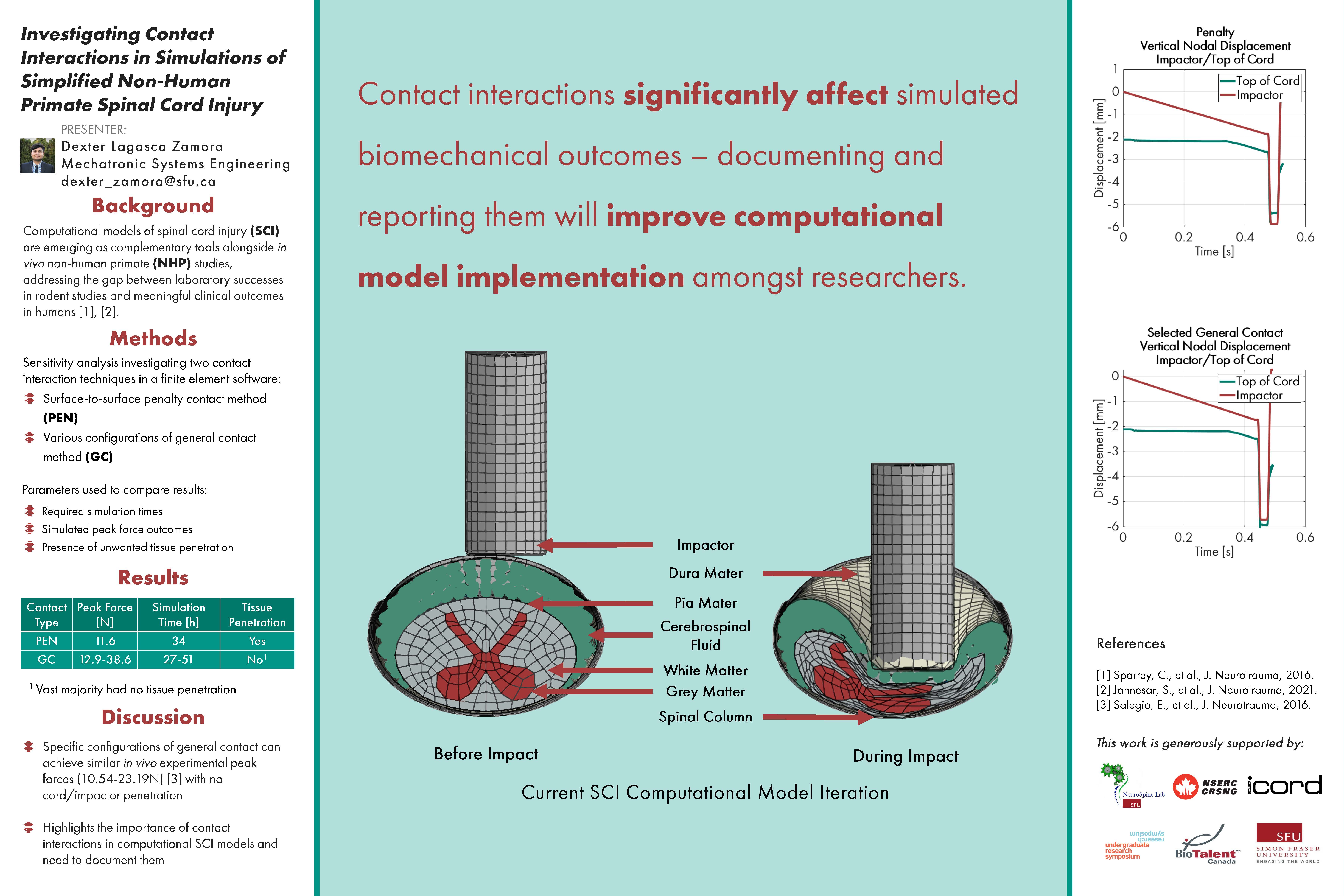Investigating Contact Interactions in Simulations of Unilateral Contusion Models of Simplified Non-Human Primate Spinal Cord Injury
Main Article Content
Abstract
Computational models of spinal cord injury (SCI) emerge as complementary tools used alongside in vivo experiments in non-human primate (NHP) studies, where the number of subjects is low due to ethical, logistical, and financial challenges. This exploratory study developed a sensitivity analysis comparing different simulation techniques in a spinal cord injury computational model. The dimensions and material properties were obtained from our previously published experiments. Two different techniques were used to model the interactions between the impactor that causes the injury and the outermost layer of a spinal cord, also called the dura, in a finite element software: (1) various configurations of general contact and (2) surface-to-surface penalty contact (the method used in previously published work). Simulation times, predicted peak forces, and simulated tissue penetrations were compared to determine the most accurate and time-efficient method. The results for the penalty contact model are 34-hour simulation time, 11.6N peak force, and a cord/impactor tissue penetration of 0.49mm. The various general contact models’ results are 27-51 hours simulation time, 12.9-38.6N peak forces, and the vast majority had no cord/impactor tissue penetration. The simulations demonstrated that contact interactions between the dura and impactor significantly affect the biomechanical outcomes of an NHP SCI computational model. Additionally, specific configurations of general contact can achieve similar in vivo experimental peak forces (10.54-23.19N) with no cord/impactor penetration. This study highlights the importance of contact interactions in computational models and the need to document them to help improve these models and facilitate their implementation for researchers.
Faculty Supervisor:
Dr. Carolyn Sparrey, Mechatronic Systems Engineering, Simon Fraser University
Article Details

This work is licensed under a Creative Commons Attribution-NonCommercial-NoDerivatives 4.0 International License.

